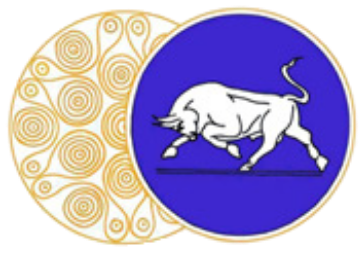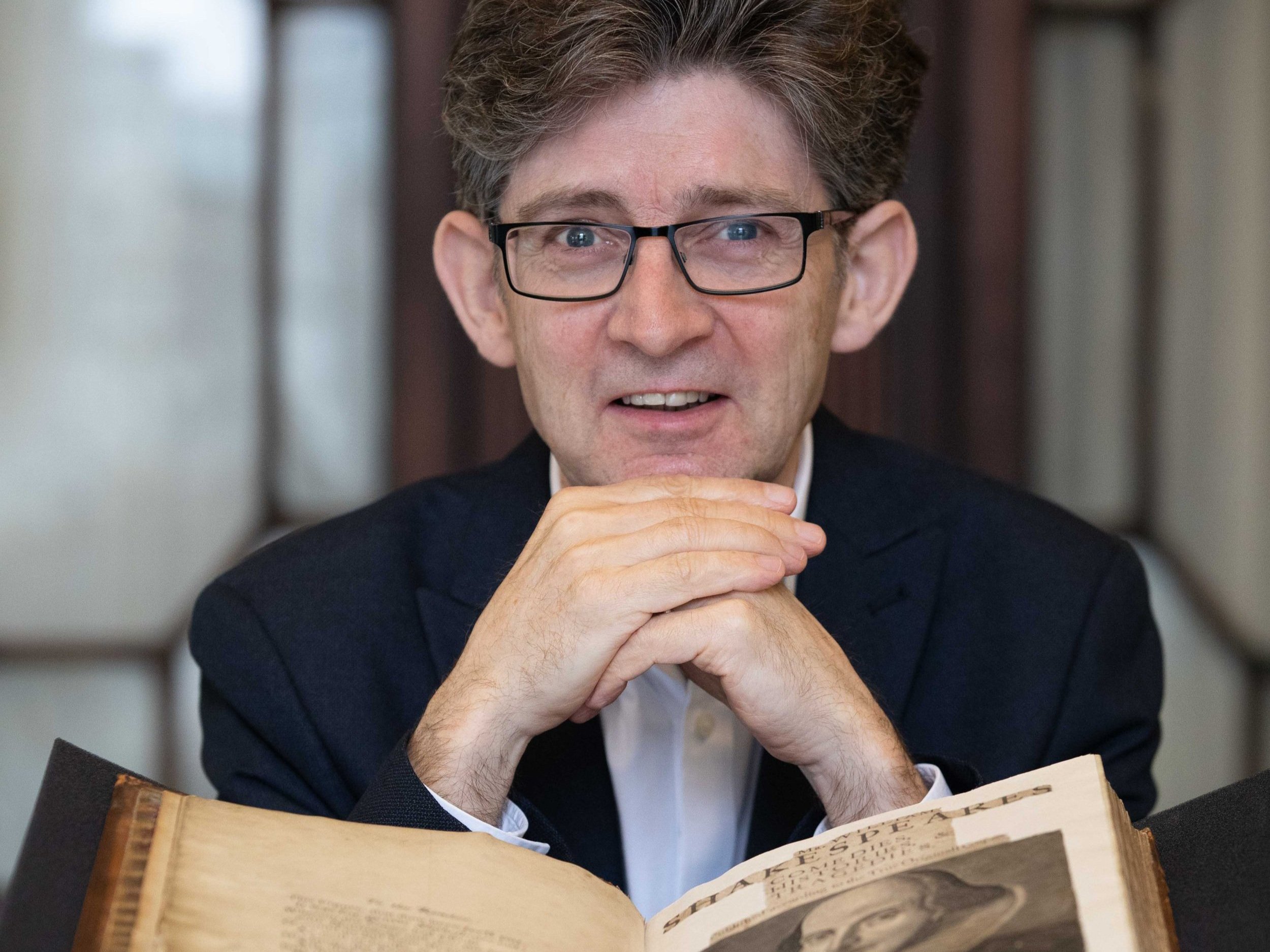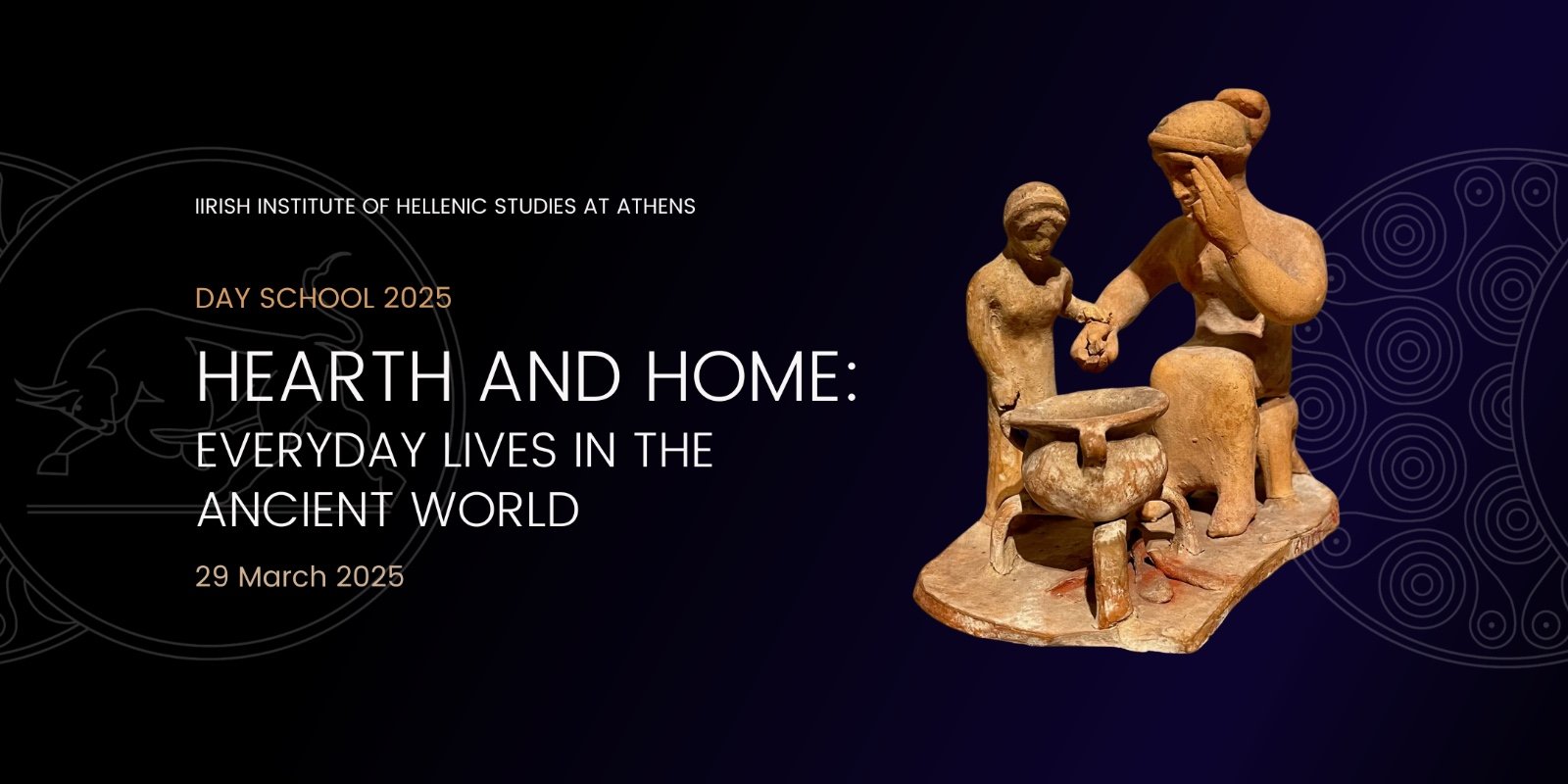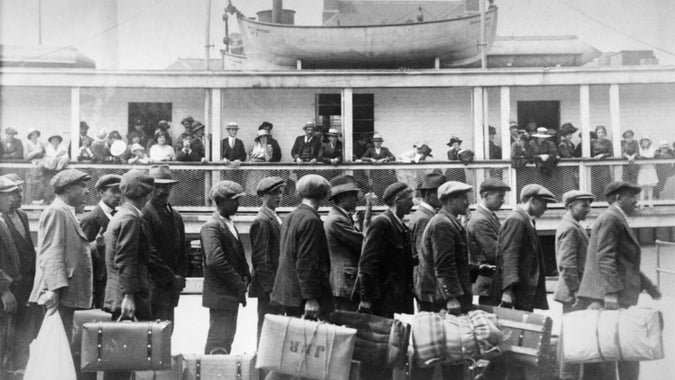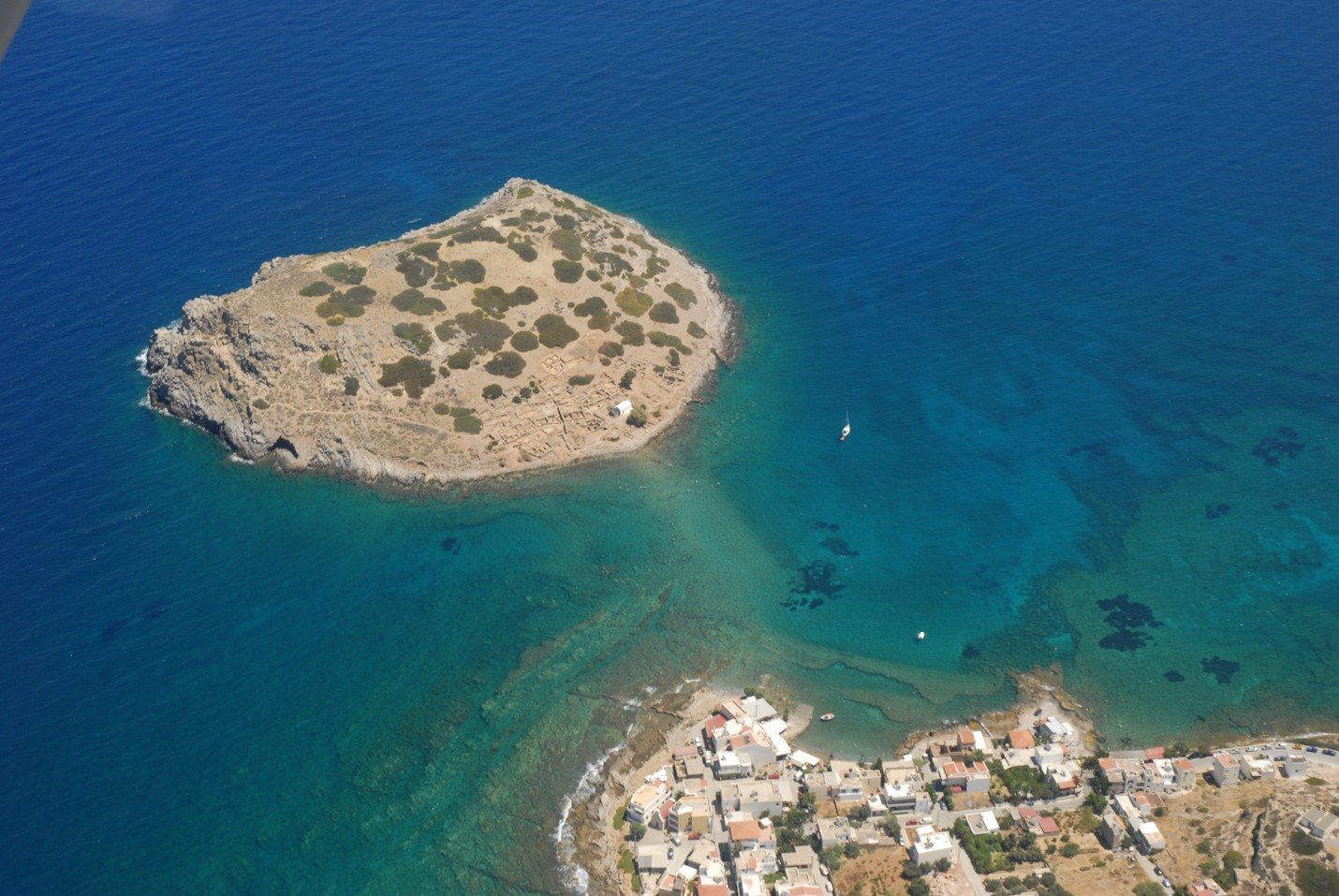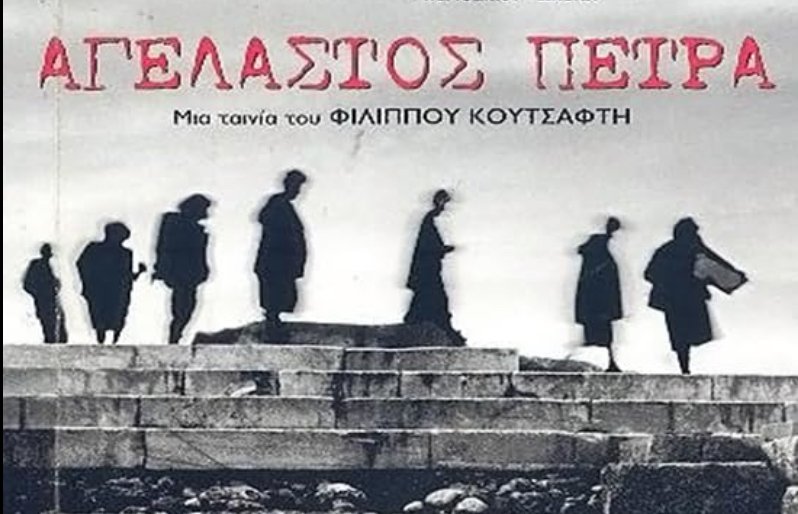IIHSA Events

Eva Andronikidou: The archaeological site in its natural context: natural and cultural diachronic processes
You are invited to an IIHSA Lecture (in person) on Thursday December 19, 2024 at 7.00 pm (Greek time) by Eva Andronikidou (National Technical University of Athens), The archaeological site in its natural context: natural and cultural diachronic processes
Abstract
This work seeks to research the way the archaeological site relates with its natural context and how this relation has evolved through time, from a designer’s point of view.
The relation of man with nature has changed radically in the last years. This relation is clearly expressed in the way man creates space. Architect and urbanist Dimitris Pikionis describes civilization as the creation that was built when man was called to respond to nature: the difficulties, the needs, the opportunities. Every civilization was dictated by nature (Pikionis, 2014: 55-57). The human constructions on earth, are transitional objects between man and nature.
An archaeological site is a fragment of a past reality in the modern world. A contemporary visitor without a relevant background can hardly understand its function or perceive how it originally looked,
especially in places where the environment has changed dramatically, either because it has converted into a modern metropolis, or because of changes in the natural landscape. The design of historical landscapes, when it results from the collaboration of Archaeology with other scientific fields, depending on the case, can lead to a deeper understanding, through the spatial experience of visiting and touring. That said, the purpose of this interdisciplinary research is to investigate methodologies and production of material that can be used as a basis for a design proposal of an architectural synthesis of an archaeological site.

Stefano Ruzza, Which Mycenaeans? Forms of Regionalism in the Copais Basin in LH IIIA-B
You are invited to an IIHSA Lecture (in person) on Thursday November 21, 2024 at 7.00 pm (Greek time)/ 5.00 pm (Irish time) / 12.00 (EST) by Stefano Ruzza (PhD candidate, La Sapienza University of Rome and National and Kapodistrian University of Athens), Which Mycenaeans? Forms of Regionalism in the Copais Basin in LH IIIA-B.
Abstract: The term ‘Mycenaean’ coined more than one hundred years ago, is widely used to label the Late Bronze Age culture that flourished in the Aegean. Despite its usefulness, though, this term is too broad and fails to consider the cultural, social, economic, organisational, and political differences that existed within the Mycenaean World. When regionalism is accounted, the Copais Basin in NW Boeotia is an interesting case study from several points of view. Indeed, it is somehow at the border between the Southern Greek Mainland, the heart of the Mycenaean civilisation, and its northern periphery. Its prehistoric inhabitants, also, partly drained the lake to claim new land to farm showing not only unparalleled skills but also an original economic strategy. Within this framework, I reconsider all the archaeological evidence retrieved within the region to discuss the meaning they may have had for the inhabitants of the basin in LH IIIA–LH IIIB (roughly 1400–1200 BC). Finally, I aim to stress how, despite its incredible potential, NW Boeotia is somewhat neglected by archaeological research when compared to other regions such as SE Boeotia, Argolid and Messenia.
The lecture will be held in person at the IIHSA in Athens: 7.00 pm (Greek time)/5.00 pm (Irish time)/12.00 (EST). If you would like to attend the lecture online, contact us at irishinstitutegr@gmail.com and we will provide you with a Zoom link.

Phil Holden (Greek-Irish Society), James Joyce’s Ulysses: Celebrating the Greek influence on an Irish masterpiece
We are delighted to host this in person Greek-Irish Society event and to welcome their members to our new premises at Agras 23.
Abstract
Phil Holden presents a brief introduction to the life of the Irish writer James Joyce, with the distinct focus on his greatest work, Ulysses. In addition to exploring the remarkable story of Joyce’s struggle to write and publish Ulysses in the face of accusations of obscenity, the talk will throw light on the brilliance of the book itself, its literary inventiveness and, above all, its ingenious retelling of Homer’s Odyssey.
When Ulysses was published in 1922 it changed literature, while also creating an enduring connection between Irish and Greek literature to be celebrated and cherished even now, more than a century later. Come along to the presentation, learn about a remarkable work of literature, and be persuaded to delve deeper into this fascinating book.
About the speaker
Phil Holden has lived in Athens for nearly thirty years. He is the headmaster of St. Lawrence College, a British school based in southern Athens. Holding dual British-Irish nationality, Phil has been a Joyce enthusiast since first encountering the author's works as a teenager. He is married to Argyri.

Stephanie Aulsebrook: Context And Content: Rethinking the Poros Wall Hoard from Late Bronze Age Mycenae
You are invited to an IIHSA Online Lecture on Thursday, November 2023 at 5.30 pm (Irish time) / 7.30 pm (Greek time) by Dr Stephanie Aulsebrook (University of Warsaw): ‘Context And Content: Rethinking the Poros Wall Hoard from Late Bronze Age Mycenae.’
Abstract: The phenomenon of hoarding metal artefacts in Bronze and Iron Age Europe has attracted much scholarly interest, generating fierce debates about their secular or ritual nature in particular. The Poros Wall Hoard, excavated at Mycenae in 1952, is one of five such groups of metalwork known from Late Bronze Age contexts at this site. Until a restudy of this hoard commenced in 2018, interpretations of its underlying meaning had centred on its contents; these had prompted its assignment to the category of “founder’s hoards”, that is to say a group of objects buried by a smith for safekeeping. The first stage of this restudy, focused on the context of the hoard, revealed mistakes in its publication had obscured important stratigraphic evidence that pointed to its deliberate inclusion within a landscape of ritual activity. In this presentation I will share the preliminary results of the ongoing second phase of this restudy, returning to the objects themselves. Detailed macroscopic analysis, aided by optical microscopy, uncovered information concerning the choice of objects and their treatment that, amongst other conclusions, also indicates the influence of ritual considerations on the actions associated with the deposition of this hoard.
This lecture is co-hosted by the School of Archaeology, University College Dublin.
Registration details to follow shortly
Email for any further information: irishinstitutegr@gmail.com

Luigi Lafasciano: The Archaeology of Ritual Dreaming in the Greco-Roman World
You are invited to an IIHSA Hybrid Lecture on Thursday, October 19, 2023 at 5.30 pm (Irish time) / 7.30 pm (Greek time) by Dr Luigi Lafasciano, ‘The Archaeology of Ritual Dreaming in the Greco-Roman World: Lines of Enquiry, Sources, Interpretations’
Abstract: The lecture will present the outlines of an ongoing research on the phenomenon of ritual dreaming in the Greek and Roman Mediterranean, from the Archaic age until Late Antiquity. The phenomenon of ritual dreaming is explored in a variety of contexts, from ancient oracular and therapeutic cults to the late antique cult of the saints in Early Christian culture. Ritual dreaming is presented both in its historical-religious evolution and through its archaeological and monumental evidence.
The event will be held in person at the IIHSA.
In order to attend the event online via Zoom, please register: tiny.cc/fqubvz
The lecture is co-hosted by the School of Classics, University College Dublin

Greek and Irish Diaspora: Parallel lives
2022 is a milestone year for both Greece and Ireland marking the 100th anniversary of the Asia Minor catastrophe and the establishment of the independent Irish State. To mark the occasion, we have invited a number of Greek and Irish experts to give brief talks exploring the impact of the Greek and Irish diaspora on the formation of modern Greece and Ireland:
Prof. Alexander Kitroeff: “Greek and Irish immigrant encounters in America in the 20th century”
Dr Maurice Casey: “How Irish emigration to America shaped Ireland in 1922”
Dr Alexandra Mourgou: “Population mobility, displacement, and popular culture: From the multi-ethnic societies of the Ottoman Empire to a national state's places of rebetiko in Piraeus”
This hybrid event is organised by the Irish Institute of Hellenic Studies with support from the Embassy of Ireland. The event will be followed by a reception.
The event will take place on Friday, 2nd December 2022 at 18:00 in “Kostis Palamas” Hall.
Address: 48 Akadimias str. & Sinastr., 105 62 Athens. To book to attend in person, please email irishinstitutegr@gmail.com by November 28th, 2022.
To book to join online, please register below via Eventbrite.

Sean McGrath, How to do things with animals: Oppian and the ancient zoological tradition
You are invited to an IIHSA Online Lecture on November 3rd, 2022 at 5.30 pm (Irish time) / 7.30 pm (Greek time) by Sean McGrath (Trinity College Dublin).
Animal anecdotes are ubiquitous in the literature of the imperial period: colourful tales about the remarkable behaviour of animals fill the pages of not only specialized zoological tomes but also of philosophical treatises, rhetorical works and the ancient novel. Moreover, many of these anecdotes emerge time and again with minor variations across both generic and linguistic borders. Over the past century, scholarship on this zoological tradition has mainly focused on source criticism, determining from which (oftentimes lost) sources our extant texts derived their material. Less critical attention has been dedicated to the rhetorical purpose of these animal anecdotes. For instance, many animal species became shorthand for certain philosophical issues, serving as paradigms for specific virtues or vices. This paper seeks to explore how Oppian’s Halieutica, a Greek didactic epic from the second century about fish and fishing, engages with the zoological discourse of its time. The Halieutica assumes that its readers arrive with a horizon of expectations about the marine world it depicts, which it in turn subverts, modifies, or elucidates. By reading Oppian’s fish next to similar accounts from, for instance, Pliny, Plutarch, or Aelian, we can better understand the contributions the Halieutica makes to the zoological tradition.
The lecture is co-hosted by the Department of Classics, Trinity College Dublin.
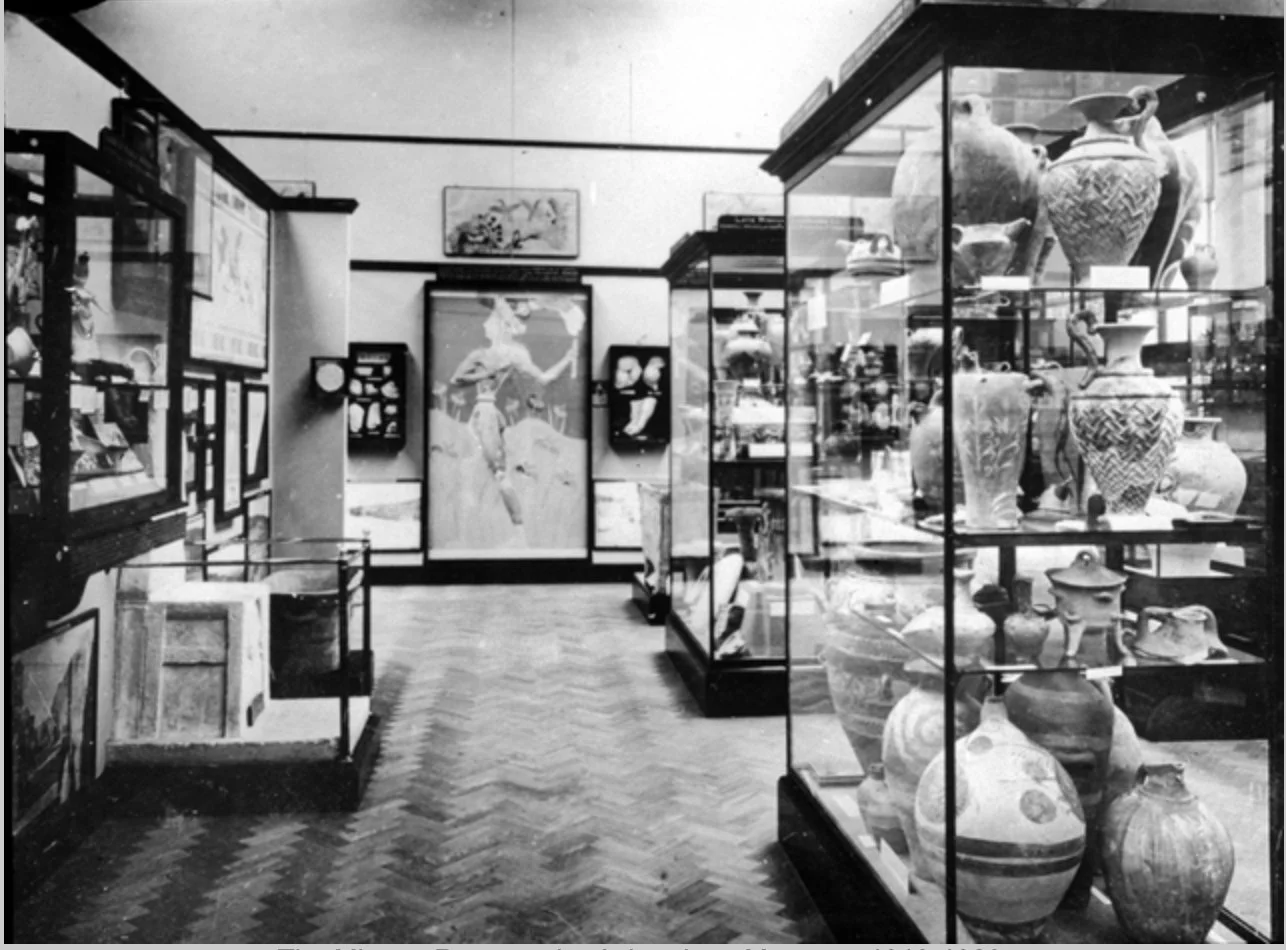
Mnemosyne Rice, Decolonising Minoan archaeology: a study of museum display in an early British context
You are invited to an IIHSA Online Lecture on October 27th, 2022 at 5.30 pm (Irish time) / 7.30 pm (Greek time) by Mnemosyne Rice (Trinity College Dublin).
The ‘discovery’ of Minoan civilisation at the beginning of the twentieth century came at a unique political moment in 1909, when powerful states (Britain, France, Italy, Germany, and the United States) established ‘administrative’ presences on the island. Corresponding archaeological schools operated against this colonial backdrop. This political situation allowed for Minoan artefacts to be exported from the island to foreign museum collections almost as soon as excavation began. The acquisition of Minoan artefacts by museums in the major cities of the colonial powers has influenced the display of that material and its impact. Despite this clear influence, no in-depth, diachronic analysis of the dispersal and display of Minoan material in different museums has been attempted, nor has there been systematic study of trends in those exhibitions. This paper will begin to fill that gap in scholarship, by employing a postcolonial approach which is indispensable to such a study. Specifically, the paper focuses on the early period of collection of Minoan artefacts in the British and Ashmolean Museums, from the very end of the nineteenth century to the period after the First World War.
The lecture is co-hosted by the Department of Classics, Trinity College Dublin.

Joanne Murphy, The Irish Institute of Hellenic Studies at Athens: Who we are and what we do
You are invited to an IIHSA Online Lecture on October 13th, 2022 at 5.30 pm (Irish time) / 7.30 pm (Greek time) by Professor Joanne Murphy (Director, Irish Institute of Hellenic Studies at Athens).
The Irish Institute of Hellenic Studies at Athens is the only Irish cultural Institute in Greece. While many of our members are academic, either scholars or students, the Institute is open to and provides services for a wide audience who are interested in Greek culture, past and present. This lecture will provide an overview of the history, mission, and goals of the Institute. It will include a summary of the ongoing research by the members – both senior scholars and graduate students – and highlight some recently completed research. It will also provide a synopsis of our programmes last year that consisted of academic and outreach lectures and a study tour for students. We will also explain how you can become a member and support the Institute.
The lecture is co-hosted by the School of Archaeology, University College Dublin.
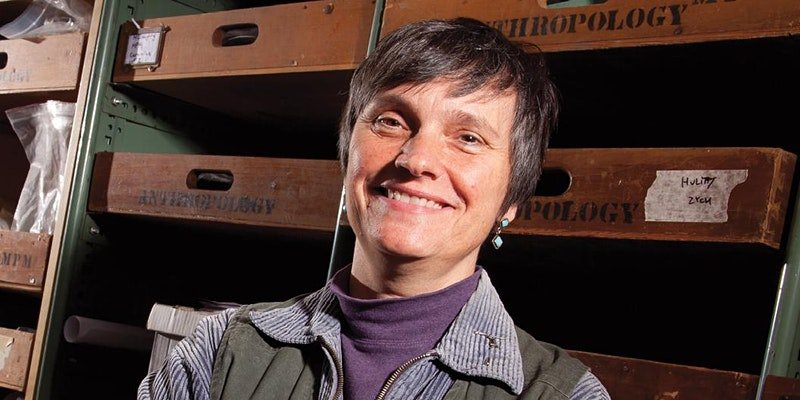
Bettina Arnold, "European Celtic Identity: Made in Greece?”
You are invited to an IIHSA Online Lecture on Thursday, April 28th 2022 at 5.30 pm (Irish time) / 7.30 pm (Greek time) by Professor Bettina Arnold (University of Wisconsin-Milwaukee).
Abstract: The starting point for my talk is a simple question: Without Hecataeus of Miletus, Herodotus and other early Greek writers would the designation Celtic have become the most frequently encountered ethnonym in the European Union? As an anthropologically trained archaeologist specializing in pre-Roman Iron Age Europe in southwest Germany I have frequently found myself wishing that Herodotus in particular had never existed or at least had confined his observations to first-hand sources of evidence. It is largely due to his geographically challenged assessment of the area surrounding the sources of the Danube River that the early Iron Age hillfort of the Heuneburg, where I have been engaged in fieldwork since 1988, has become seemingly inextricably associated with Herodotus’ Pyrene, for example. That putative identification has resulted in decades of Celtic-themed museum exhibits, documentaries and publications. The most recent manifestation of this phenomenon is the explicit designation, by political fiat, of “Keltenland Baden-Württemberg”: https://www.baden-wuerttemberg.de/de/service/presse/pressemitteilung/pid/auf-dem-weg-zum-keltenland-baden-wuerttemberg/. Professional archaeologists working in this region have long engaged in linguistic code-switching when presenting their research in academic vs. popular contexts (Hallstatt/Eisenzeit vs. Celtic, for example) but the distinction between these terms is becoming increasingly blurred. This presentation will explore the historical and archaeological roots as well as the contemporary political ramifications of playing fast and loose with early Greek sources when interpreting archaeological contexts.

Piotr Zeman, Life outside a citadel: reconstructing the Lower Town of Late Bronze Age Mycenae
You are invited to an IIHSA Online Lecture on Thursday, 24th February 2022 at 5.30 pm (Irish time) / 7.30 pm (Greek time) by Piotr Zeman, Ph.D. Candidate, Adam Mickiewicz University at Poznan, Poland.
Abstract: The Late Bronze Age palatial town of Mycenae went through a long formative process, to reach a more stable settlement pattern in the second part of the Late Helladic IIIA phase (ca. 1410-1300 BC), when its acropolis was fortified for the first time. Together with the construction of the first palace it led to establishing the citadel - an elite palatial zone, separated from the lower town. This area concentrated most of the archaeological research on the site for the last 150 years, and its history has often been equated with that of the entire settlement. However, multiple traces of the Late Bronze Age occupation were uncovered outside the walls of the citadel, since the 1950s, currently reaching the number of 20 identifiable buildings. This paper presents a summary of an analysis of each of those contexts, based on a study of their architecture, finds, and stratigraphical sequences. It serves as a basis for an attempt to reconstruct the history and organization of the lower town of Mycenae during the palatial and post-palatial period of the Mycenaean era. Analysis of the changes in the occupational pattern of the site leads to defining key moments in the settlement’s history, including a disastrous earthquake that occurred in the middle of LH IIIB phase (ca. 1300-11190 BC), after which the town shrinks in size from over 20 ha to only around 10 ha. This event had a tremendous impact, beginning a long period of a decline and gradual loss of political and economic status by Mycenae. In the same time, a careful restudy of the buildings of the lower town allows me to formulate some more general thoughts on the Late Helladic domestic architecture, as well as on the economic and social organization of the community of Late Bronze Age Mycenae. The latter is based on profound reinterpretation of some of the structures, including for example the Panagia Houses, which has so far been defined in most of the literature as three separate, ordinary residences of the poor, but can be seen rather as a single architectural complex developed around a middle-class family household.
Please register via Eventbrite where you will find a Zoom link to attend the lecture. You will also receive it in your email after your registration.
Email for any further information: irishinstitutegr@gmail.com
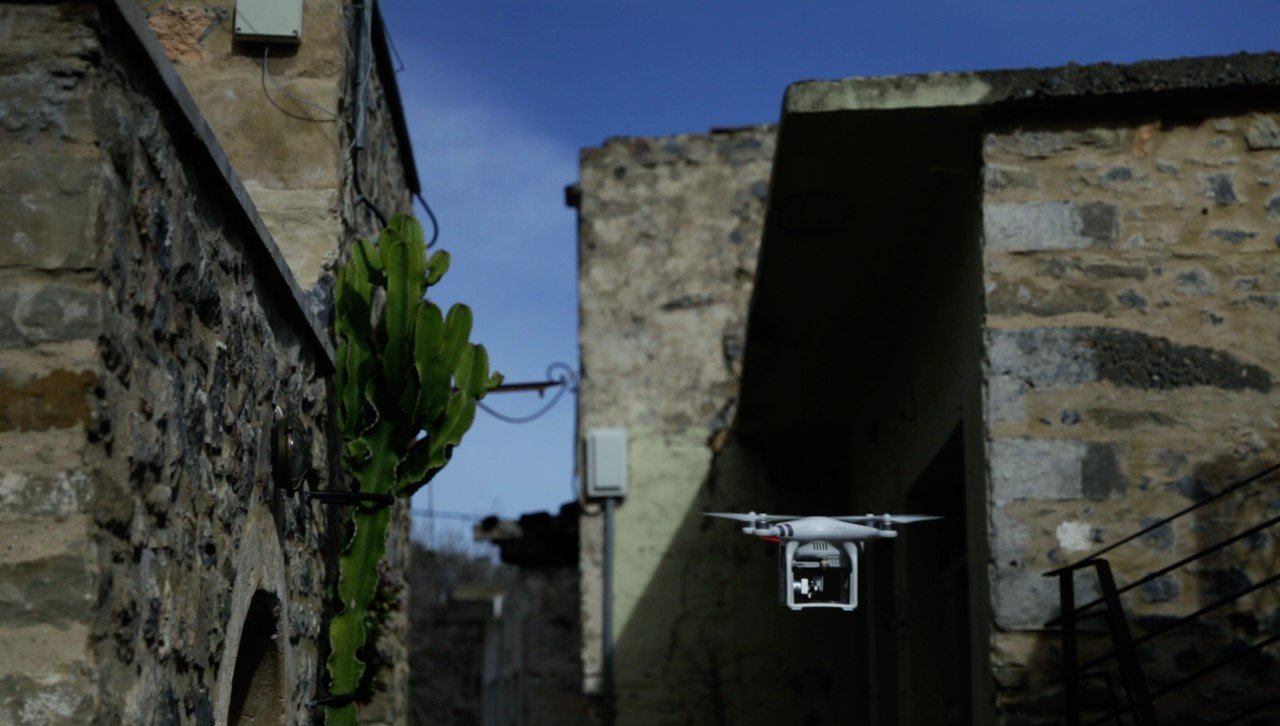
Klairi Gianniri, Public Archaeology as a means to empower rural communities: a case study in mountainous areas of East Crete
You are invited to an IIHSA Online Lecture on Thursday, 27th January 2022 at 5.30 pm (Irish time) / 7.30 pm (Greek time) by Klairi Gianniri, Ph.D. Candidate in the University of Athens
Over the last years the significance of archaeology for the local communities in the Aegean has been under discussion. The archaeological ethnography research in the Anatoli village (Province of Hierapetra), has shown that archaeology’s impact may extend into matters of everyday life, such as the relatively small but vital functions of a rural community. These functions and their entanglement with archaeology on mountainous settlements of Crete is the topic whereupon this paper focuses. In particular, the relationship between a local community and archaeology as well as the ways it can be traced, comprehended, and utilised for the mutual benefit of both parties will be examined. Also, the contribution of archaeological ethnography and oral history will be discussed within the frame of the exploration of phenomena that shape a community’s identity. Events of public archaeology have the potential to reintroduce the world of archaeology to the contemporary social sphere. Consequently, this paper attempts not only to point out the multiple benefits of a rural community's involvement in the archaeological research, but also to highlight the ways through which tradition and collective memory can propose alternative and multivocal channels to talk about archaeology today and to make it socially relevant and useful to present day communities.
Please register via Eventbrite where you will find a Zoom link to attend the lecture. You will also receive it in your email after your registration.
Email for any further information: irishinstitutegr@gmail.com

Katerina Vrettou, “Transcultural contacts and the influence of the Cyclades on the material culture of Crete during the Bronze Age”
You are invited to an IIHSA Online Lecture on Thursday, 25th November at 6.00 pm (Irish time) / 8.00 pm (Greek time) by Katerina Vrettou (PhD candidate, Institute of Classical Archaeology, University of Heidelberg)
Movability and the regular contacts between different areas in the Aegean during the long period of the Bronze Age, resulted to the Aegean becoming a region where many elements where about to interrelate and shape different cultural traits. The regular andclose contacts between Cyclades and Crete played a crucial role in these developing processes and contributed to the creation of an amalgam of cultural features in Crete where the influence of the Cyclades is observable. This paper constitutes an analyticapproach of the character of the transcultural entanglements that were created between Cyclades and Crete during the Bronze Age. The most crucial question that arises is how the Cycladic ‘foreign’ objects in Crete were perceived by the local population and further how they became adopted, in some cases adapted and in the end integrated in the local codes of communication and practice.
Please register via Eventbrite where you will find a Zoom link to attend the lecture. You will also receive it in your email after your registration.
Email for any further information: irishinstitutegr@gmail.com

Dr Eric Haywood, “St Patrick to the Rescue! Travelling from Constantinople to Ireland in the 15th Century”
Thursday 18th March at 5pm (Irish time)/ 7pm (Greek time)

Dr Ellen Finn, "Losing liminality: Turner’s theory of transition in the funerary archaeology of Prepalatial Crete"
Thursday 11th February at 5pm (Irish time)/ 7pm (Greek time)


Dr. Fotis Ifantidis, Biogrpahies of personal adornment in Neolithic Greece
Dr. Fotis Ifantidis (Aristotle University of Thessaloniki), «Biographies of personal adornment in Neolithic Greece»
Beads, pendants, and annulets comprise just a small -and quite fragmented- part of a vast “toolkit” of corporal decoration uncovered from excavations in Neolithic Greece. While the configuration of a “panoramic” view of facets of use and production of personal ornaments in Neolithic Greece is confronted with multi-leveled problems, a closer look at the conditions of use, reuse, or deposition may highlight multiple narratives on the biographies of these - closely linked to the body -artifacts.
